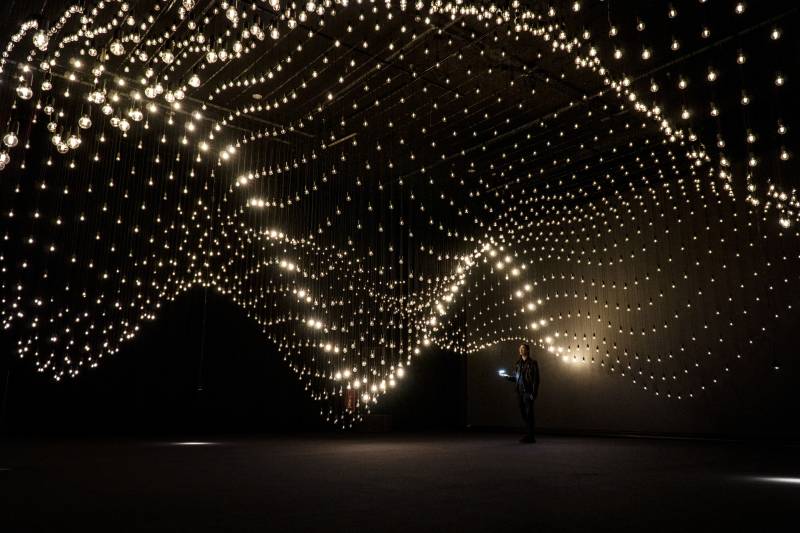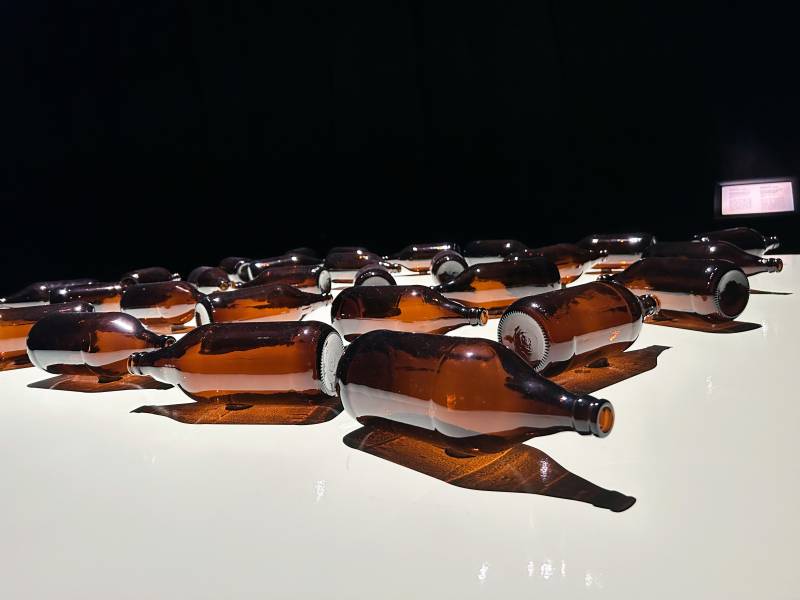On a sunny afternoon, the Mission District’s colorful streets are even more vibrant than usual. Light reflects off of large-scale murals that bring to life the symbols and stories of the neighborhood’s history of Latinx migration and activism. But entering Gray Area — a low-key and intimate art space on Mission at 23rd — can feel like wandering into a dark abyss, where the outside world has been brought to a halt.
Reclaiming the Technology of Surveillance and Deportation

It’s an ideal environment for Mexican Canadian artist Rafael Lozano-Hemmer’s exhibition TECHS-MECHS, where visitors are invited to interact with a number of immersive electronic art pieces that ponder human connection in an increasingly divisive and surveilled world.
TECHS-MECHS, on view until May 31, is the first event in Gray Area’s ACCESS programming, a three-part series that explores how technology is impacting artists and communities from varying cultural backgrounds and identities. With an emphasis on Latinx activism and politics, Lozano-Hemmer’s exhibition digs into how technology is part of Mexican history, and how tools have been used for understanding, progress and resistance. His pieces offer descriptions in both English and Spanish, and admission is free for Mission District residents — many of whom identify as Chicano or Mexican American.

Powered by thermal cameras, computerized tracking systems, heart rate sensors and generative software, the exhibition reclaims technology that has been utilized to police migrants across the U.S.-Mexico border to instead create connections and raise awareness on the issue. “The idea is to use the language of technology and spectacle and scale to bring people into the area,” said Lozano-Hemmer, reflecting on his work in the 2020 documentary Borderlands.
Each piece in TECHS-MECHS consists of several complex mechanisms and unique algorithms where the main apparatus for activation is a participant’s touch. On its own, Pulse Topology is a massive installation of 3,000 light bulbs that flickers and weaves its way across an otherwise vast and empty expanse. It is luminous but static until somebody reaches beneath one of its pulse sensors, holding still until the room begins to thrum with the sound of their heartbeat. For a few seconds, wrapped within this shimmering cocoon, people and time freeze as a new pulse courses through the space. Afterwards, the heartbeat is preserved into one of the bulbs, becoming a droplet in an ocean of blinking light.

In adjoining rooms, other pieces sit and wait to be interacted with. Airborne Newscasts features projections of real-time stories from Mexican newspapers like El Universal and La Jornada that evaporate and billow away when a visitor’s shadow comes into contact with them. As people flit across the screen, moving their arms and legs around, the once-prominent words disappear in an instance: fleeting and weightless.
The longer they spend in the show, the more the participants become aware of the effect they have on the art around them. Their presence is meaningful. By reaching out to touch a piece, they are able to alter its image permanently. From the moment they step inside and release their curiosity upon their surroundings, the small connections they make represent the myriad of ways people and space bleed into one another. “I learned that you can’t make an artwork impalpable,” said Lozano-Hemmer in Borderlands. “To create an artwork for listening is really what the project became.”

‘TECHS-MECHS’ is on view at Gray Area through May 31. Admission is free for Mission District residents. Tickets and more information here.

